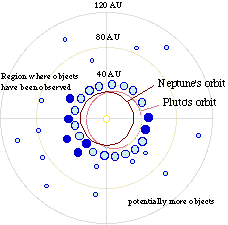Click on image for full size
Image courtesy of NASA
Is it really true that man never really walked on the Moon?
The picture of the American Flag (the one put there by the Apollo astronauts) is waving (or straight out) in the wind. How could that be possible if there is no atmosphere on the Moon? Was it some sort of optical illusion? If there were only three persons on that trip to the moon and one was Neil Armstrong, one was the other was standing beside him and third one was in the space shuttle then who took the photograph?
The question of whether or not NASA really went to the Moon comes up periodically, usually coinciding with speculation about U.S. Government conspiracies designed to embarrass the Russians by "winning" the Space Race. The FOX TV network even did a special presentation on the question earlier this year, titled Conspiracy Theory: Did We Land on the Moon? The "evidence" presented by people who believe that NASA faked the Moon landings, though, is pretty weak.This proof that NASA perpetrated a giant hoax on the world is supposedly found in mistakes that NASA made in producing evidence of the Moon landing. These mistakes supposedly show that instead of being actual photos or evidence of a Moon landing, the photos of astronauts on the Moon and other pieces of evidence in support of Moon landings are badly produced fakes. An example of this is in the photo at left, in which the American flag appears to be "waving in the breeze" on the surface of the Moon. There is no air, and therefore no wind, on the Moon. Does this mean that NASA has made a collossal mistake in faking evidence of a Moon landing? Absolutely not.
On July 20, 1969, two Apollo 11 astronauts planted an American flag on the surface of the moon. The flag was a standard 3-foot-by-5-foot nylon flag that was altered by sewing a hem along the top. A telescoping crossbar, hinged to the flagpole, was extended through this hem so that when the flag was planted on the Moon, it would stand out instead of hanging limp against the flagpole (as it would normally do, since there is no wind on the Moon). When the flag was planted, astronauts Neil Armstrong and Buzz Aldrin had a little trouble getting the telescoping crossbar to extend to its full length, and so it ended up being a little shorter than it should have been. As a result, the flag was bunched up slightly and looked like it was actually "waving in the breeze."
The flag "waving in the breeze" on the Moon is just one example of the sort of evidence that some people have used to cast doubt over whether NASA actually sent men to the Moon. More information about this subject, as well as more detailed rebuttals to the objection voiced by the FOX TV special and other groups can be found at The Great Moon Hoax, BadAstronomy.com, and The Moon Hoax.
Some of our users have written in and asked a good question: if there were three astronauts on the Apollo missions, and two were on the Moon and the other was in the command module orbiting the Moon (a slight correction to the question at the top of this page, since the Space Shuttle wasn't developed at the time of the Apollo missions), then who took the picture shown on this page? The photos of the two astronauts doing their work on the Moon's surface were taken by an automatic 16 mm Data Acquisition Camera (DAC), which was mounted on the Lunar module which had brought Armstrong and Aldrin to the Moon.













